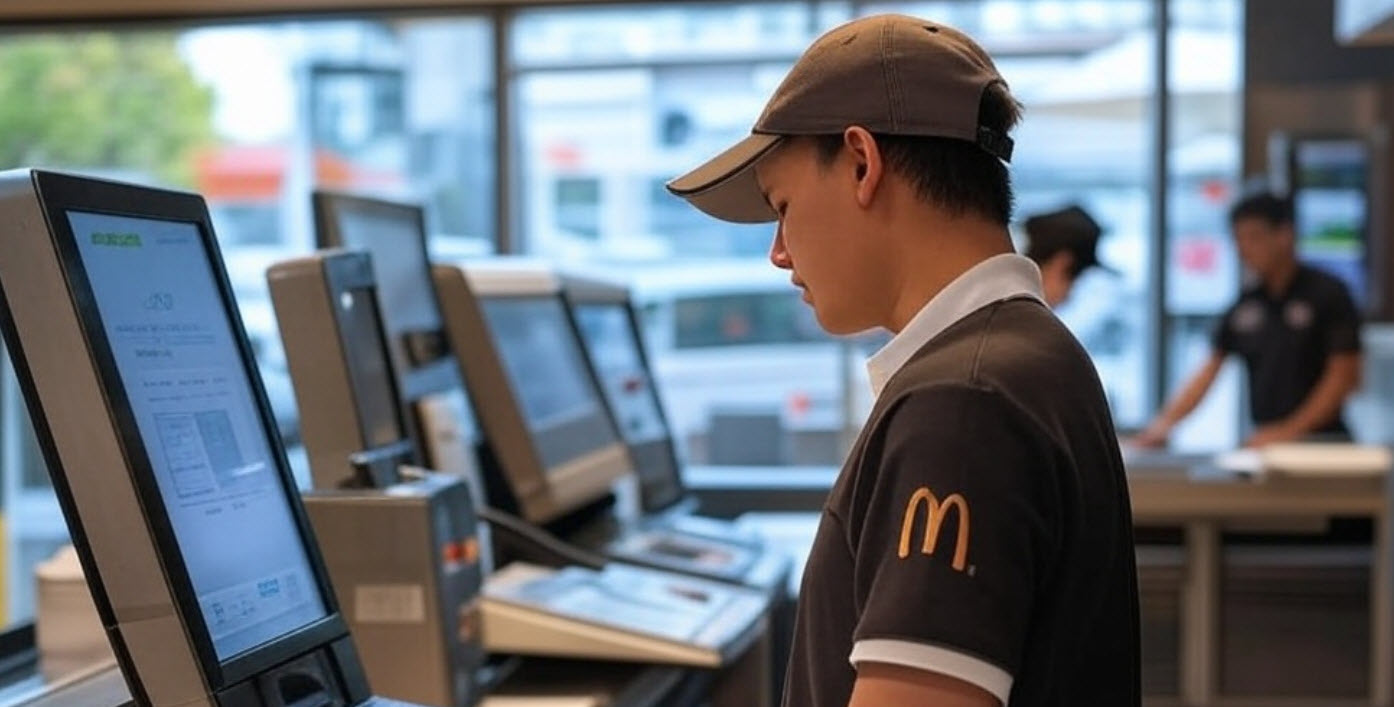
McDonald’s Bets Big on AI: A Transformative Leap for the Fast-Food Giant
McDonald’s, a name synonymous with fast food across the globe, is embarking on a significant technological transformation, betting heavily on artificial intelligence (AI) to revolutionize its operations and elevate the customer experience. This bold move involves a comprehensive integration of AI across its vast network of over 43,000 restaurants worldwide, signaling a pivotal shift in how the company approaches efficiency, employee well-being, and customer satisfaction. The initiative promises to streamline processes, alleviate the pressure on employees, and ultimately redefine the fast-food landscape.
The core motivation behind this AI overhaul stems from the inherent complexities and demands of running a fast-food restaurant. McDonald’s recognized the need to optimize various facets of its business, from managing in-store traffic to processing drive-through orders and coordinating with delivery services. Recognizing the significant challenges faced by its workforce, McDonald’s is strategically investing in AI to create a more efficient and less stressful work environment.
According to Brian Rice, McDonald’s Chief Information Officer, the fast-paced nature of their restaurants can be particularly taxing on staff. Employees are often juggling multiple responsibilities simultaneously, leading to increased pressure and potential errors. Rice believes that technology, particularly AI, holds the key to alleviating these pressures. "Our restaurants, frankly, can be very stressful… Technology solutions will alleviate the stress," he stated, emphasizing the company’s commitment to improving the employee experience.
To realize its ambitious AI vision, McDonald’s has forged a strategic partnership with Google Cloud, a leader in cloud computing and AI technologies. This collaboration will see the implementation of edge computing solutions across McDonald’s restaurants. Edge computing brings data processing closer to the source, enabling real-time analysis and decision-making within individual restaurants. This approach significantly reduces reliance on centralized data centers, resulting in faster response times and improved operational agility.
The implementation of edge computing is crucial for various AI applications, including predictive maintenance. By analyzing data from restaurant equipment, AI algorithms can predict potential failures and schedule maintenance proactively, minimizing downtime and ensuring smooth operations. Furthermore, edge computing enables AI-driven customer interactions, such as personalized menu recommendations and targeted promotions, enhancing the overall dining experience.
McDonald’s aims to improve customer experience beyond operational efficiency. AI is expected to play a major role in personalizing and streamlining the customer journey. For example, the company envisions using AI-powered kiosks to offer tailored menu suggestions based on individual preferences and past orders. This level of personalization could significantly enhance customer satisfaction and drive repeat business.
AI will also be instrumental in optimizing drive-through operations. By analyzing real-time data on traffic patterns and order volumes, AI algorithms can dynamically adjust staffing levels and streamline the ordering process, reducing wait times and improving customer throughput. Furthermore, AI-powered voice assistants could automate the ordering process, allowing customers to place their orders quickly and efficiently.
The integration of AI also offers opportunities to improve inventory management and reduce food waste. By accurately forecasting demand, AI algorithms can help McDonald’s optimize its ordering and stocking processes, minimizing spoilage and ensuring that customers have access to their favorite menu items. This not only improves profitability but also contributes to the company’s sustainability efforts.
McDonald’s AI initiative is not an isolated event; it reflects a broader trend in the fast-food industry towards automation and digital transformation. Competitors like Wendy’s have also begun exploring AI applications in their operations, recognizing the potential of these technologies to enhance efficiency and improve the customer experience. This industry-wide shift suggests that AI is poised to become a critical component of the modern fast-food business model.
While the potential benefits of AI are undeniable, the transition is not without its challenges. McDonald’s has learned from past experiences, including setbacks encountered during the testing of automated drive-through ordering systems. These early trials were marred by technical glitches and customer dissatisfaction, highlighting the importance of careful planning and thorough testing before deploying AI solutions on a large scale.
McDonald’s views these past challenges as valuable learning opportunities. The company is committed to refining its AI applications based on customer feedback and operational data. This iterative approach will ensure that AI solutions are not only technologically advanced but also user-friendly and effective in meeting the needs of both employees and customers.
McDonald’s ambitious AI overhaul represents a pivotal moment in the fast-food industry. By embracing advanced technologies, the company aims to improve operational efficiency, enhance employee well-being, and deliver a superior customer experience. As these AI initiatives roll out across its global network of restaurants, McDonald’s is poised to set new standards for automation and innovation in the restaurant sector, potentially revolutionizing how fast food is prepared, served, and enjoyed. The success of this initiative could pave the way for other fast-food chains to embrace AI, further accelerating the transformation of the industry and reshaping the dining experience for millions of customers worldwide. It signifies a move towards a future where technology plays a central role in optimizing every aspect of the fast-food business, from the kitchen to the drive-through.
